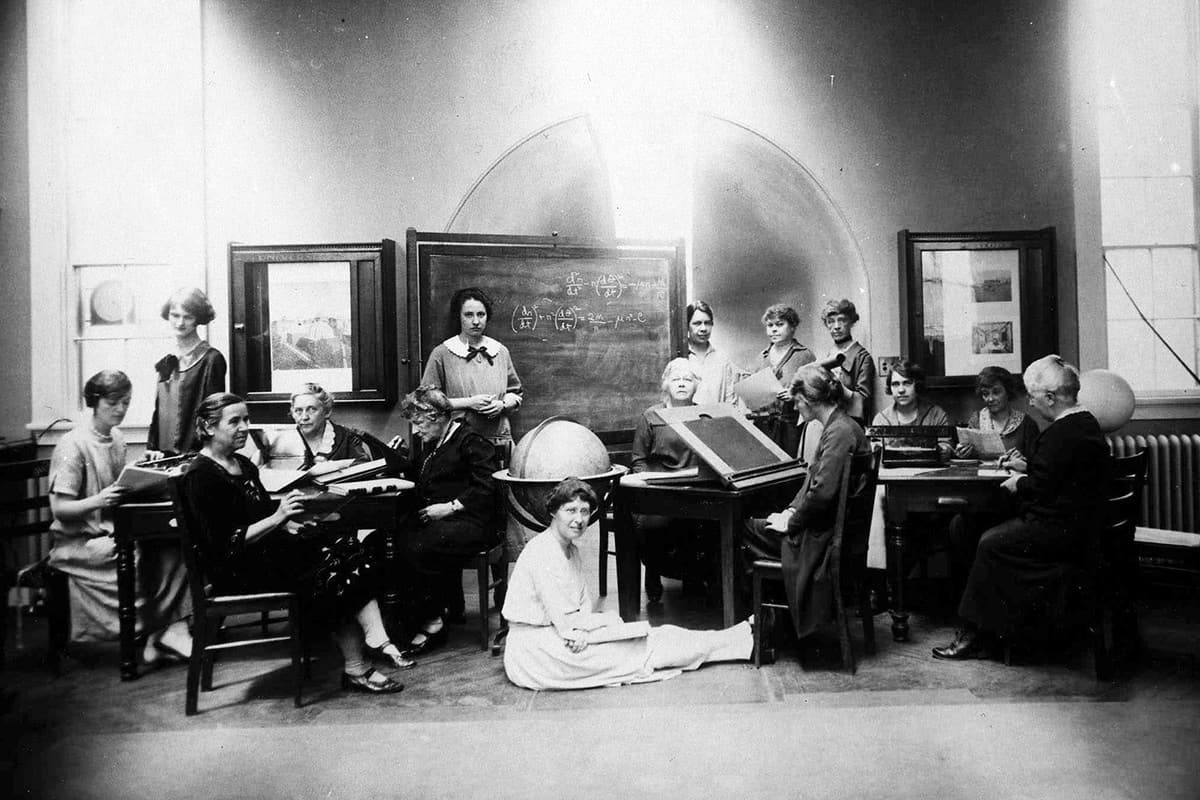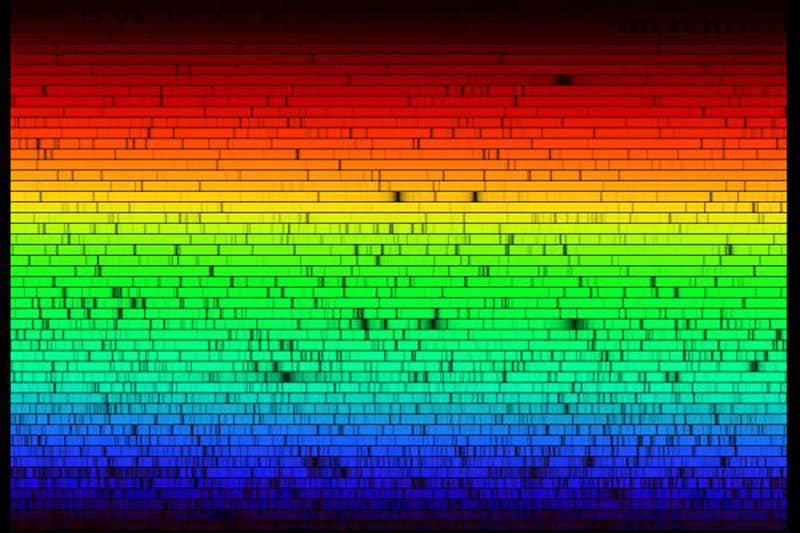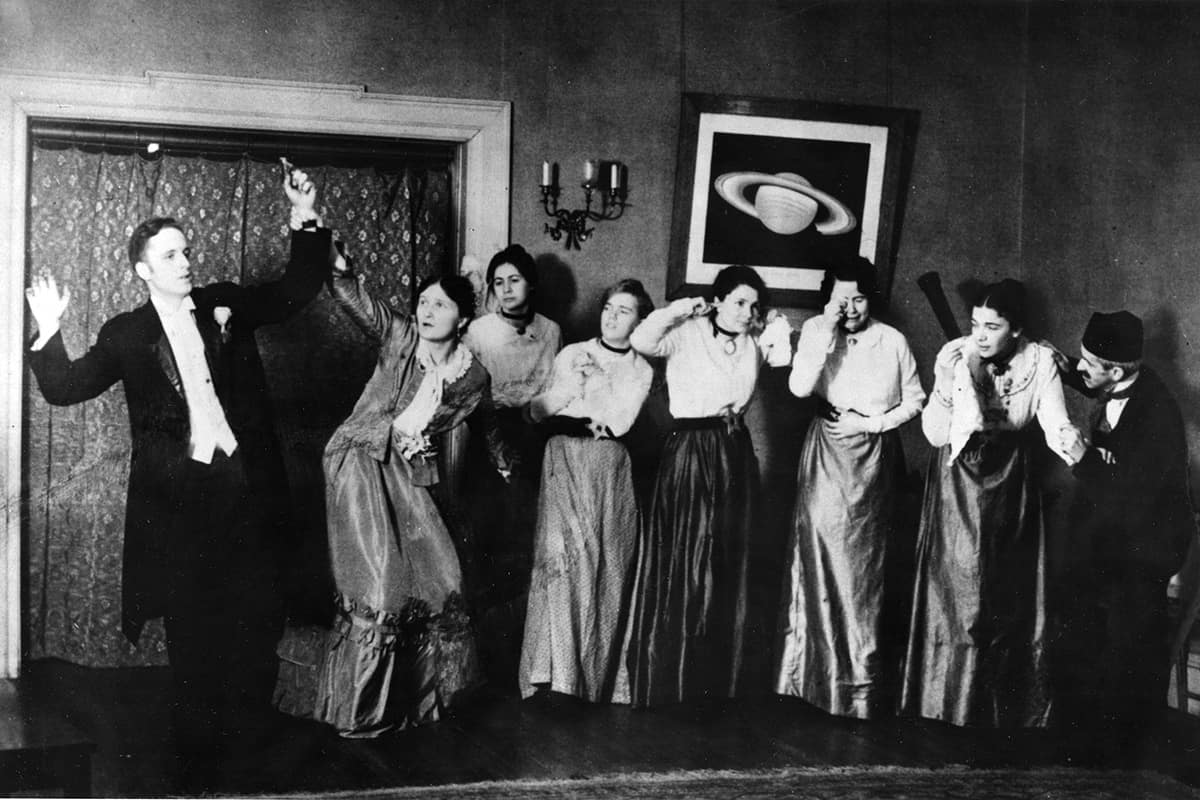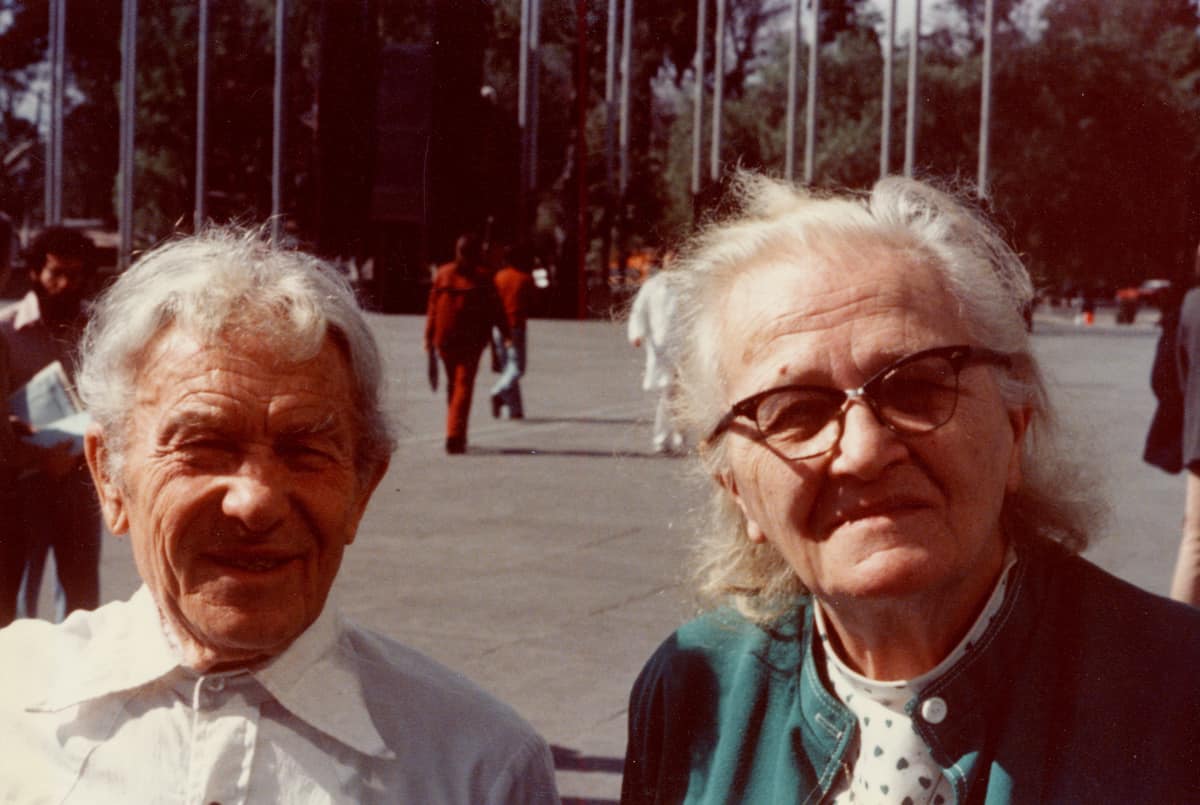Sidney Perkowitz delves into the work and life of Cecilia Payne-Gaposchkin, from her stellar astronomical findings to a career-long struggle with bias against women in the early 20th century

Hydrogen, the simplest atom, is a basic building block of the universe. We know that it existed soon after the universe was born and that it still appears as a large part of the interstellar medium in which stars form. It is also the nuclear fuel that keeps stars radiating immense amounts of energy as they evolve over eons to create the chemical elements.
But how did we learn that hydrogen is a widespread and fundamental component of the universe? Not enough people know that the cosmic importance of hydrogen was first grasped by a young PhD student, Cecilia Payne (Payne-Gaposchkin after she married), who in 1925 discovered hydrogen in the stars. Indeed, she earned a PhD at a time when it was still extremely difficult for women to do so, and did breakthrough research for her thesis. For all the success of her science, her story also demonstrates the barriers and sexism that made it difficult for women to fulfil their scientific aspirations, and affected their careers throughout.
Young scientist
Cecilia Payne was born in Wendover, England, in 1900. Her father died when she was four, but her mother Emma saw that she had a gifted child who wanted to be a scientist. Emma enrolled her daughter in St Paul’s School for Girls in London, which was well equipped to teach science. The 17 year old thrived there and, as Payne-Gaposchkin later wrote in her autobiography The Dyer’s Hand (republished under the title Cecilia Payne-Gaposchkin: An Autobiography and Other Recollections), she would steal up to the science lab for “a little worship service of my own, adoring the chemical elements”.
Her advanced science education began in 1919 when she entered Newnham College at the University of Cambridge on a scholarship. There, she studied botany, her first love, as well as physics and chemistry – despite the fact that at the time, the university did not offer degrees to women. Nevertheless, it was an exciting time to study physical science as it absorbed the nascent areas of quantum mechanics and relativity.

At Cambridge the likes of Ernest Rutherford were exploring the atomic and subatomic worlds, and Arthur Eddington was studying the structure and development of stars. Indeed, Payne-Gaposchkin’s physics instructor was Rutherford himself, but as the only woman in his class, she found herself being humiliated. University regulations at the time required that she sit in the front row. As she relates in her autobiography, “At every lecture [Rutherford] would gaze at me pointedly…and would begin in his stentorian voice: ‘Ladies and gentlemen.’ All the boys regularly greeted this witticism with thunderous applause [and] stamping with their feet…at every lecture I wished I could sink into the earth. To this day I instinctively take my place as far back as possible in a lecture room.”
Instead, Payne-Gaposchkin found inspiration in Eddington. Almost by chance, she attended his lecture about his 1919 expedition to West Africa that confirmed Einstein’s theory of general relativity. This so impressed her that she decided to choose physics and astronomy over botany. When later she happened to meet Eddington, as she writes in her autobiography, “I blurted out that I should like to be an astronomer…he made the reply that was to sustain me through many rebuffs: ‘I can see no insuperable objection.’ ” He engaged her in his work on stellar structures, but he also cautioned her that after Cambridge, there would likely be no opportunities for a female astronomer in England.
New shores
Fortunately, a new possibility arose when Payne-Gaposchkin met Harlow Shapley, director of the Harvard College Observatory in Cambridge, Massachusetts, during his visit to the UK. He encouraged her efforts and she learned that he was instituting a graduate programme in astronomy. With a glowing recommendation from Eddington, Shapley offered her a modest stipend as a research fellow. In 1923 she sailed to the US to begin work on a PhD under Shapley’s direction.

Women had long contributed to research at the Harvard Observatory. In the 1870s Shapley’s predecessor as director, Charles Pickering, had begun hiring women known as the “Harvard Computers” (in the original sense of a person who does calculations) to analyse the stores of data the observatory was collecting. Women were preferred because they were thought to be more patient than men for work involving fine detail, and they accepted lower wages than men. Some of the computers were hired without a background in science, but even those with college degrees were paid like unskilled workers at 25–50 cents per hour (see “The universe through a glass darkly”).
The Harvard Computers were not independent researchers, but assistants with assigned projects. Nevertheless, these women made some of the most significant contributions to early observational astronomy. They included Henrietta Swan Leavitt – famous for her discovery of the period-luminosity relationship of Cepheid variables – and Annie Jump Cannon, who was internationally recognized for organizing stellar spectra.
It had been known since the mid-19th century that each element produces a unique pattern of spectral lines, and that the spectra of different stars showed both similarities and differences. This suggested that stars could be classified into groups, but there was little agreement over how best to do so.

In 1894 Cannon began the project of examining the stellar spectra collected at the observatory and putting them into a useful order. This daunting task occupied her for years. Spectra from different stars were recorded on glass photographic plates, with each image no more than an inch long. With a magnifying glass, Cannon read the details of hundreds of thousands of spectra and sorted most of them into six groups labelled B, A, F, G, K and M, with a minority placed in group O. The system was based on the strength of the Balmer absorption lines (which describe the spectral line emissions of the hydrogen atom) and reflected the spectral signatures of particular elements, such as metals in K stars.
Spectral studies
Cannon, however, did not probe the physical mechanisms that caused the spectra, nor did she extract quantitative information from them. In her PhD work, Payne-Gaposchkin drew on the physics she had learned at Cambridge to analyse this unique cache of data with the latest theories. The origin of spectral lines had been established only a decade earlier in 1913 by Niels Bohr’s early quantum theory of the hydrogen atom, later extended by others. These theories applied to neutral atoms. Payne-Gaposchkin’s great insight was to appreciate that spectra from excited or ionized atoms – such as would occur in the hot outer atmosphere of a star – differed from those of neutral atoms of the same species.

The relation among temperature, the quantum states of hot atoms and their spectral lines had been derived in 1921 by the Indian physicist Meghnad Saha. He could not fully test his ideas without knowing the quantum energy levels for each element, but these were being measured when Payne-Gaposchkin began her research. In a massive effort, she combined the new data with Saha’s theory to fully interpret Cannon’s stellar spectra including temperature effects. One significant outcome was the correlation of stellar temperatures with Cannon’s categories, with results still used today: for instance, B stars glow at 20,000 K whereas M stars glow at only 3000 K. This result, part of Payne-Gaposchkin’s remarkable 1925 thesis Stellar Atmospheres, was well received but another result in her thesis was not.
Compositional conundrums
Payne-Gaposchkin calculated the relative abundance of each element seen in the stellar spectra. For 15 of them, from lithium to barium, the results were similar for different stars and “displayed a striking parallel with the composition of the Earth”. This agreed with the belief among astronomers at that time, that the stars were made of the same stuff as the Earth.
But then came a big surprise: her analysis also showed that hydrogen was a million times more abundant than the other elements. Helium, meanwhile, was a thousand times more abundant. The conclusion that the Sun was made almost entirely of hydrogen immediately ran into trouble with a respected outside examiner of her dissertation. This was Henry Russell, director of the Princeton Observatory and a strong proponent of the idea that the Earth and the Sun had the same composition. Russell was impressed until he read her result for hydrogen. Then he wrote to Payne-Gaposchkin that there must be something wrong with the theory because “It is clearly impossible that hydrogen should be a million times more abundant than the metals.”
Without Russell’s blessing, the thesis would not be accepted and so Payne-Gaposchkin did what she felt she had to do. In the final version of her thesis, she disowned that part of her work by writing “The enormous abundance derived for [hydrogen and helium] is almost certainly not real.” But in 1929 Russell published his own derivation of the stellar abundance of the elements including hydrogen, using a different method. He cited Payne-Gaposchkin’s work and noted that his results for all the elements including the great abundance of hydrogen agreed remarkably well with hers. Without saying so directly, Russell’s paper confirmed that Payne-Gaposchkin’s entire analysis was correct, and that she was the first to discover that the Sun is mostly made of hydrogen. Despite that, he never stated that he had originally rejected that result in her thesis.
It may be that Russell offered his comment about hydrogen to warn a young scientist that presenting results contrary to accepted ideas could hurt her career. Probably only a senior researcher of Russell’s stature could have convinced the astronomical community of this new finding. Indeed, his later paper influenced astronomers toward accepting that stars are made of hydrogen to the point that he was credited with the discovery.
The power of Cecilia Payne-Gaposchkin’s thesis speaks for itself. Her lucid writing style, command of the subject and pioneering science shine through
Even without proper credit, the power of Payne-Gaposchkin’s thesis speaks for itself. Her lucid writing style, command of the subject and pioneering science shine through. Shapley had the work printed as a monograph and it sold 600 copies – virtually bestseller status for a dissertation. The highest praise came almost 40 years later, when the distinguished astronomer Otto Struve called Stellar Atmospheres “the most brilliant PhD thesis ever written in astronomy”.
If Payne-Gaposchkin had any ill-will toward Russell, she gave no outward sign of it and maintained a personal relationship with him. In a review of his work that she contributed to a 1977 symposium honouring him (he died in 1957), she called his 1929 paper “epoch-making” without referring to her own work. What she did strongly regret was that she had not stood behind her result. Her daughter Katherine Haramundanis wrote that “through her life, she lamented that decision”. In her autobiography Payne-Gaposchkin wrote “I was to blame for not having pressed my point. I had given in to Authority when I believed I was right…I note it here as a warning to the young. If you are sure of your facts, you should defend your position.”
Battling bias and prejudice
After completing her thesis, Payne-Gaposchkin stayed on at the observatory under Shapley, but in an anomalous situation. She wanted to continue astrophysical research, but because Shapley paid her a (small) salary as his “technical assistant” he felt he could direct her as if she were a Harvard Computer, and he put her to work measuring the brightness of stars – a routine project that did not much engage her. Shapley also had her teach graduate courses, but without the title of “instructor”, let alone “professor”, and without having her courses listed in the catalogue. In an attempt to remedy this, Shapley approached the dean and Harvard’s president Abbot Lawrence Lowell, but they adamantly refused. Lowell told Shapley that Miss Payne (as she was known then), “would never have a position in the University as long as he was alive”.

Gender bias like this affected Payne-Gaposchkin at every stage of her career. Her PhD (the first in astronomy at Harvard) was not technically from Harvard. Shapley had asked the chair of Harvard’s physics department to sign off on the dissertation, but as Shapley relayed to Payne-Gaposchkin, the chair refused to accept a woman candidate. Instead, Shapley had to arrange for her PhD to be awarded by Radcliffe, the women’s college at Harvard. When later he began to build a true department of astronomy at Harvard, Shapley was convinced that Payne-Gaposchkin, his best researcher, was well qualified to serve as its first chair – but he realized that Lowell would never allow it, and so he brought in a male astronomer.
After decades of work at the observatory, publishing books and hundreds of research papers and becoming a sought-after instructor, Payne-Gaposchkin remained in a kind of career twilight – poorly paid and without a real academic position. This changed only in 1954, after Shapley retired and Donald Menzel, Russell’s prize student at Princeton, became director of the observatory. He discovered how little Payne-Gaposchkin was paid and doubled her salary, and then did something truly significant. With Lowell and his anti-woman bias long gone (he had retired in 1933), Menzel was able to get Payne-Gaposchkin appointed a full professor of astronomy. This was big news: the New York Times reported on 21 June 1956 that “[Payne-Gaposchkin] is the first women to attain full professorship at Harvard through regular faculty promotion.” A few months later, she became chair of the astronomy department, the first woman to head a department at Harvard.

In retrospect, Payne-Gaposchkin’s career was eminently successful with an outstanding dissertation, prolific research, excellent teaching and distinction for her “firsts” at Harvard and other honours. Along with all her academic work, she found room for her personal life. She wed the Russian émigré astronomer Sergei Gaposchkin in 1934 and with him raised three children while she continued astronomical research.
Exceptional drive
In some sense, one might say she “had it all” in combining science with family and children, but getting there was unnecessarily difficult and gruelling because of bias against women. She became a full professor only at age 56, much later than a man with similar achievements would have reached that status, and after being passed over for advancement, which must have taken a psychological toll. Only a person with exceptional drive and persistence, along with scientific ability, could have endured until final recognition.
Ultimately, Cecilia Payne-Gaposchkin, who died in 1979, was a pioneering scientist who did amazing work throughout her career, but was not treated professionally for most of it. Most of the Harvard Computers were employees, rather than researchers or graduate students. While Shapley gave Payne-Gaposchkin important opportunities and understood how good a scientist she was, he did also treat her merely as one more Harvard Computer, hired to support his own plans for the observatory. She advanced the position of women in astronomy beyond that of the computers, but she still encountered barriers that kept her from being the complete scientist she wanted to be, as women only began to achieve later in the 20th century. Her stellar work was often overlooked and her legacy forgotten, as she became one of the many “hidden” women in science who actually laid the foundation in their fields. It is only more recently that the significant contributions of the likes of Payne-Gaposchkin are being post-scripted into the history of science, and she should be remembered as a key transitional figure between older and newer possibilities for women in science.



